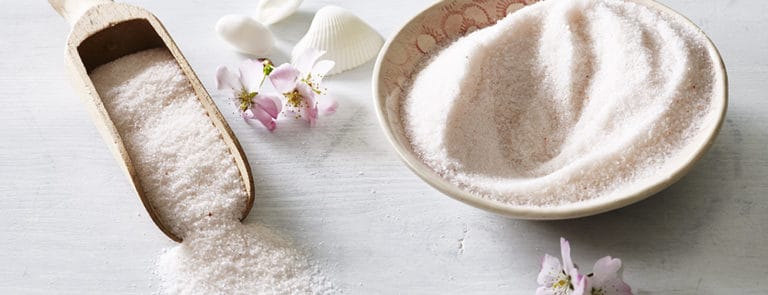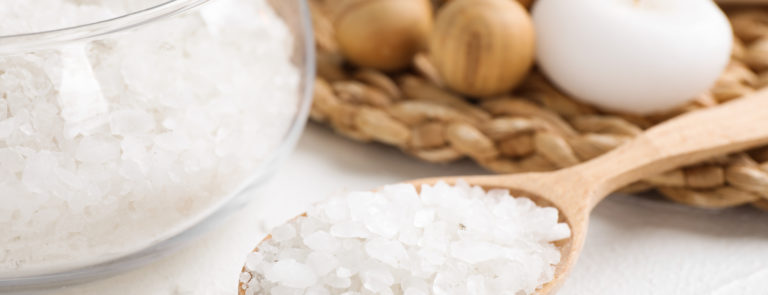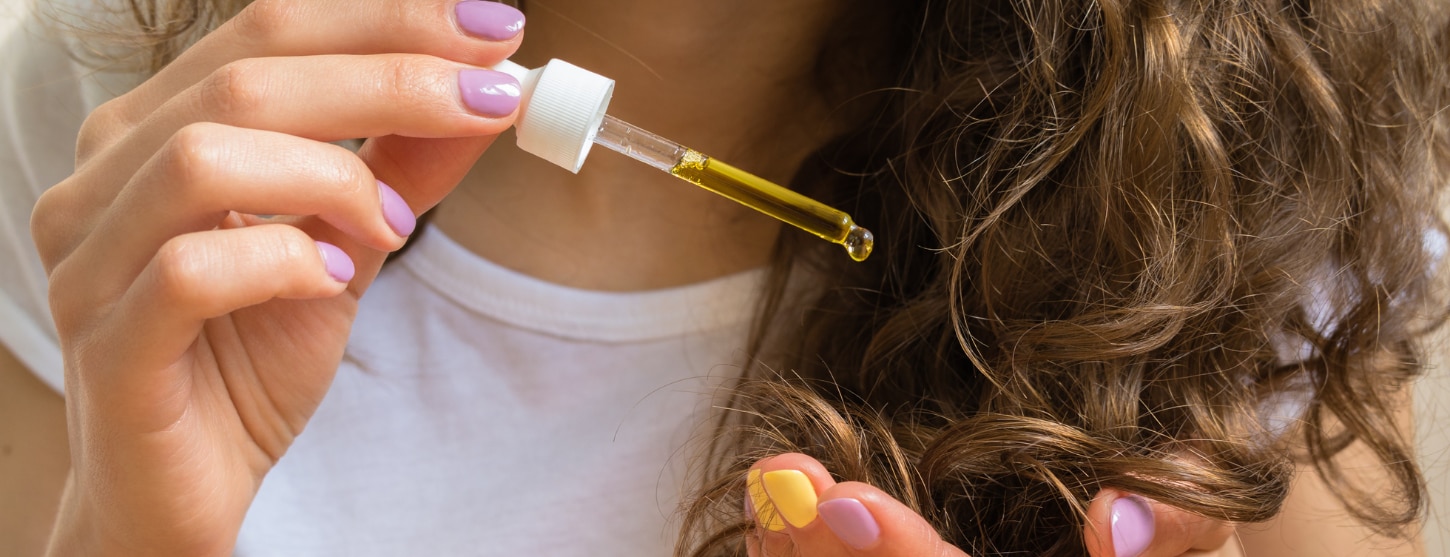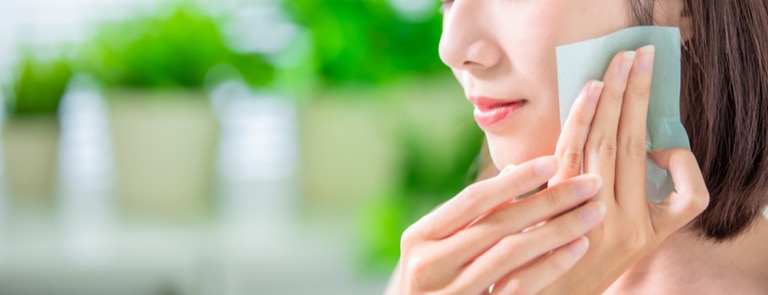20% off £30
At home facial – a step-by-step guide
.png)
Ok, so, have you been thinking about giving yourself an at-home facial, but aren’t sure about the best way to go about it? Facials are one of those things you can go and get done professionally at a spa or beauty salon, but there’s no stopping you from giving yourself a DIY facial either.
What better way to relax and unwind than by treating yourself to a facial, which is even more comforting when you don’t have to leave the house to experience it. If the idea of giving yourself a facial appeals to you, keep reading for insight on the benefits of doing so and the best way to go about it. We also share some natural face mask recipes, giving you everything you need to perfect your at home facial routine.
Why are facials important?
Facials are an all-round treat. They help us relax and unwind while also doing our skin some deep-down good at the same time too. They’re not just for people with skin issues either, everybody can (and should) treat themselves to a facial on a regular basis or from time-to-time.
They’re great for really getting to know your skin and working out what it’s doing and if it’s lacking in anything. For example, it may be too dry in places, looking a bit dull and lacking its usual glow or in need of a light exfoliation here and there. Or the signs of healthy ageing may be starting to creep in which, are always better to be spotted sooner, rather than later, so that you can start to take preventative measures.
If you have your facial done professionally, then you should be advised on your skin health and what you need to do to look after it. And if you’re doing your own facials at home, you will most definitely develop a clearer understanding of what your skin’s up to.
9 top benefits of facials
Facials are great for:1
-
Deep cleansing your skin
Especially if you use steam to open up your pores. This will enable the products you use to better penetrate your skin deep down and really give your skin a thorough cleanse.
-
Helping prevent healthy ageing
A regular routine can help boost cell regeneration and promote collagen development which, in turn, can help reduce the appearance of fine lines and wrinkles and plump skin up.
-
Boosting blood circulation
Massaging your skin can help improve the blood circulation in your face. And better blood circulation means more oxygen and nutrients flowing to your face. Facial massages are one of the main things that can give you that post-facial healthy glow.
-
Detoxing your skin
Daily cleansing, toning and moisturising routines will only go so far. Facials actually help detoxify your skin, especially if you’re using antioxidant-rich products, such as sea salt, herbal extracts and oils.
-
Reducing stress levels
The simple act of taking time out to give your skin some TLC is incredibly stress-relieving. And when you couple this with the fact facial massage activates your sympathetic nervous system (according to the Biomedical Research journal), facials have a proven ability to calm the body and mind.
-
Exfoliating skin
Exfoliation is incredibly important for skin health because it gets rid of any dead skin cells and dirt that’s built up and may be potentially clogging your pores. Skin that hasn’t been exfoliated is often rough and dry, but skin that has, is soft and smooth, because all of those dead skin cells have gone.
12 homemade scrubs for your face
It’s surprisingly easy to make your own body scrub with ingredients you might already have in your kitchen cupboard. We've got 12 simple scrub recipes for every skin type.


-
Improving skin absorption
Regular facials mean skin is kept free of dead skin cells and dirt that can lead to dry and rough skin. It also means pores aren’t clogged and are able to absorb any products that are put on your face better.
-
Tackling blemishes
If you’re using products that are suitable for your skin type and giving your skin regular facial TLC, then it may help keep blemishes at bay, especially if you’re exfoliating any dirt, dead skin and bacteria away and preventing pores from becoming all clogged up.
-
Practising self-care
We all tend to lead really busy lives these days that involve very little ‘me’ let alone pamper time. Taking time out, just once a week or once a month, to treat yourself to a home facial is a really quick and easy way of giving yourself a dose of self-care you deserve.
Hand-picked content: The importance of self-care
Summary
- Facials aren’t just for people with skin issues
- They’re great for really getting to ‘know’ your skin
- Facials are beneficial in so many ways, ranging from deep cleansing and detoxing skin, to reducing stress and improving skin absorption
What is DIY facial?
A DIY facial is just that – a facial that you do yourself. So instead of booking an appointment for a professional facial at a beauty salon or health spa, you do the facial yourself! Home facials are one up from your daily skincare routine, because you’re putting aside some dedicated time, other than your five to ten minutes every morning and night, to take a look at and take care of your skin.
At home facials go deeper than your daily routine. And the best thing is, you don’t have to do them all of the time; once a week is plenty (if you have the time to do so). Facials are treats, not an everyday occurrence.
How to do a facial at home
At-home facials don’t have to be fancy, but if you want the best results, it is important you follow a set routine when it comes to carrying them out. Not all facials are exactly the same, and neither are DIY facials. However, most facials tend to follow a similar process, give or take a step here or there.
A step-by-step guide for doing a DIY facial:
-
Create the right atmosphere
Facials are one of the most luxurious, pampering things you can do, particularly if the atmosphere around you is nice and relaxing. Start the pampering process with taking an Epsom salt bath, which will instantly help you unwind. Light a candle or two, play chilled music and get all of your favourite facial products out in front of you, ready to use.
What is Epsom salt?
What is Epsom salt? How does it work? What is it used for? What are the benefits of using it? Get the answers to all of these key questions right here…


-
Cleanse your skin
It’s important you carry out your facial with a 100% clean facial canvas, so make sure you thoroughly clean your skin of any makeup and other products. If you need to, double cleanse your skin by using an oil-based cleanser first, and then a water-based cleanser. The oil-based cleanser will remove any traces of makeup, products and oil, while the water-based cleanser will get rid of any grime or sweat.
-
Steam your skin
This will help open up your pores and soften the top layer of your skin to prime it for exfoliation. To steam your skin:
- Put your face over a bowl of hot water and cover your head with a towel to trap the steam in or;
- Soak a towel in hot water and place it on your face (take care to make sure the water doesn’t burn your skin).
-
Exfoliate your skin
You can use an exfoliating scrub or a chemical or enzyme exfoliator. Scrub products can potentially cause micro-tears that may lead to breakouts. Meanwhile, chemical or enzyme exfoliators can be gently massaged into skin (but be warned – they must not be left on for longer than recommended, as they can really aggravate skin).
-
Apply a face mask
You’ve cleansed, you’ve steamed and you’ve exfoliated. Now you want to really detox your skin. Face masks are an important stage in the facial process, and it’s entirely up to you which type of mask you use. Ideally, it should contain detoxifying ingredients (e.g. a clay or charcoal mask) that will help clean out your pores, since your pores will be open after exfoliating.
Gently massage the mask into your skin and leave it on for around 15 to 20 minutes. If you can, take a bath with it on or pop in the shower, as the steam will really help with absorption. (For face mask inspiration, take a look at the face mask recipes a bit further down).
-
Moisturise your skin
You don’t want your skin to lose any valuable moisture, so it’s important you apply a serum or moisturiser to help seal moisture into your skin. For a more spa-like moisturising experience, mix a few drops of serum with your moisturiser and apply. You may also want to use a facial massage tool, such as a jade roller or gua sha, to gently massage your face and help reduce any puffiness and promote collagen production and cell turnover.
Handpicked content: All about gua sha
5 DIY face mask recipes for you to try
-
Aloe vera and cucumber mask
Aloe vera’s long been used as a balm for soothing sunburnt skin, thanks to its hydrating, healing and anti-ageing properties. Little wonder that it’s perfect for a moisturising mask. Blend ½ a cucumber, which will cleanse and cool, with 2tbsp of aloe vera.
-
Shea butter and coconut oil mask
Shea butter is rich in vitamins A, E and F, which can help to protect skin from UV rays and penetrates deeply into skin. Traditionally, it has been used in Africa for its soothing properties. As well as being a fantastic hydrator, coconut oil evens out skin tone, and helps restore skin’s elasticity. Simply mix equal amounts together.2
-
Brewer’s yeast and almond milk
Not just for sprinkling on salads, brewer’s yeast is a great source of vitamins and minerals that can help your skin stay wrinkle-free and well-hydrated. Mix 1tbsp of brewer’s yeast with an equal amount of honey and ¼ cup of unsweetened almond milk (rich in Vitamin E), riboflavin, which helps the skin use oxygen, and niacin, which traps moisture.
-
Lemon, avocado and banana mask
If you can stop yourself munching on the ingredients, you can create a homemade face mask that exfoliates and moisturises by mashing the juice from 1 lemon with 1/2 an avocado, 1 banana and ¼ cup of olive oil. The lemon is rich in Vitamin C and citric acid, which may help brighten skin. While the avocado brings omega fatty acids to the party, along with Vitamin A-packed bananas (great for promoting cell renewal). Olive oil binds it all together with anti-oxidants and hydrating squalene.
Handpicked content: Get glowing skin with Vitamin C
-
Honey and Epsom salt mask
Honey’s antibacterial qualities make it great for helping to eliminate blemish prone skin and, as it’s packed with antioxidants, it could help slow down the ageing process, too. Mix moisturising honey with equal amounts of detoxifying Epsom salts (thought to help fight free radicals and inflammation) into a paste for a soothing, glow-giving mask. Simples!
Summary
- DIY facials are facials you carry out yourself
- They can be enjoyed at least once a week
- You should follow a routine, ideally one that involves cleansing, steaming, exfoliating and moisturising skin
Takeaway
At home facials are all the rage right now. They’re one of the best things you can do to treat your skin and yourself, and the best thing is, everybody can enjoy them! Plus the fact, they’re a skincare essential you can treat yourself to without having to step foot outside the house!
Whether you have one once a week or once a month, facials can help keep your skin in tip-top condition by boosting cell turnover and collagen production, clearing pores and hydrating skin, as well as many more things. It’s time to set aside some time for DIY facials….
In the meantime, if this article has inspired you to give yourself an at home facial, and you’re now deciding which products to pamper your skin with, this article will help. It features ‘Our pick of the best face oils.’
Last updated: 27 May 2021















